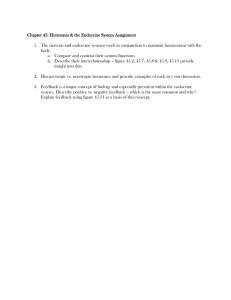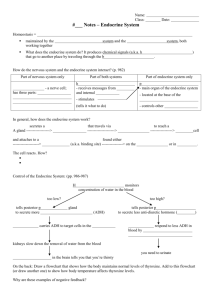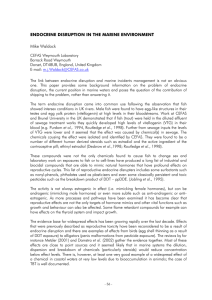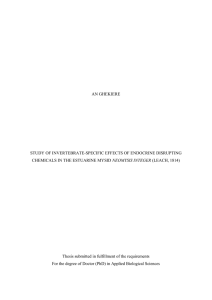NEOMYSIS INTEGER PERSPECTIVES IN INVERTEBRATE ENDOCRINE DISRUPTION RESEARCH Ghekiere An , Tim Verslycke
advertisement
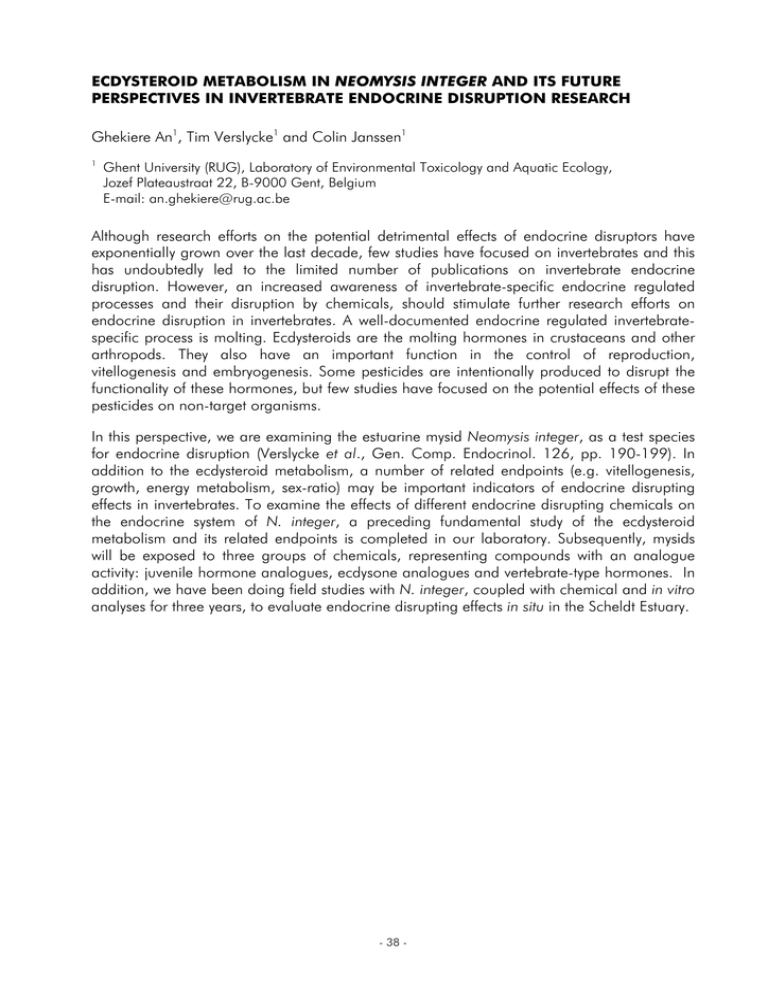
ECDYSTEROID METABOLISM IN NEOMYSIS INTEGER AND ITS FUTURE PERSPECTIVES IN INVERTEBRATE ENDOCRINE DISRUPTION RESEARCH Ghekiere An1, Tim Verslycke1 and Colin Janssen1 1 Ghent University (RUG), Laboratory of Environmental Toxicology and Aquatic Ecology, Jozef Plateaustraat 22, B-9000 Gent, Belgium E-mail: an.ghekiere@rug.ac.be Although research efforts on the potential detrimental effects of endocrine disruptors have exponentially grown over the last decade, few studies have focused on invertebrates and this has undoubtedly led to the limited number of publications on invertebrate endocrine disruption. However, an increased awareness of invertebrate-specific endocrine regulated processes and their disruption by chemicals, should stimulate further research efforts on endocrine disruption in invertebrates. A well-documented endocrine regulated invertebratespecific process is molting. Ecdysteroids are the molting hormones in crustaceans and other arthropods. They also have an important function in the control of reproduction, vitellogenesis and embryogenesis. Some pesticides are intentionally produced to disrupt the functionality of these hormones, but few studies have focused on the potential effects of these pesticides on non-target organisms. In this perspective, we are examining the estuarine mysid Neomysis integer, as a test species for endocrine disruption (Verslycke et al., Gen. Comp. Endocrinol. 126, pp. 190-199). In addition to the ecdysteroid metabolism, a number of related endpoints (e.g. vitellogenesis, growth, energy metabolism, sex-ratio) may be important indicators of endocrine disrupting effects in invertebrates. To examine the effects of different endocrine disrupting chemicals on the endocrine system of N. integer, a preceding fundamental study of the ecdysteroid metabolism and its related endpoints is completed in our laboratory. Subsequently, mysids will be exposed to three groups of chemicals, representing compounds with an analogue activity: juvenile hormone analogues, ecdysone analogues and vertebrate-type hormones. In addition, we have been doing field studies with N. integer, coupled with chemical and in vitro analyses for three years, to evaluate endocrine disrupting effects in situ in the Scheldt Estuary. - 38 -

